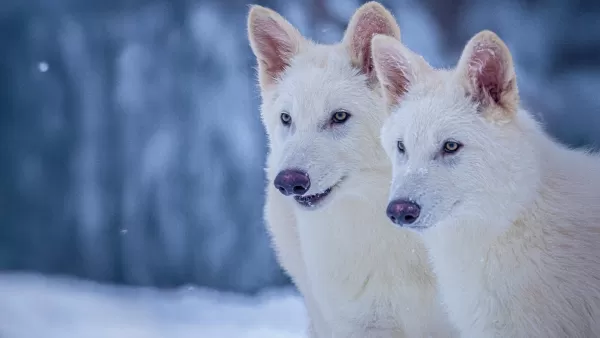Resurrecting a giant canine from 12,500 years ago might sound like the plot of a blockbuster movie filled with dramatic special effects, but it's become reality thanks to Colossal Biosciences. This biotech company has successfully brought three dire wolves back to life, and they're now residing in a secret location within the United States. Named Romulus, Remus, and their younger sister Khaleesi, these dire wolves are the result of an ambitious project that combined the DNA of the common gray wolf, gene-editing techniques, and domestic dog surrogates.

The dire wolves are a testament to the innovative spirit of Colossal Biosciences. CEO Ben Lamm expressed his pride in the team's accomplishment, stating, "This massive milestone is the first of many coming examples demonstrating that our end-to-end de-extinction technology stack works." The company extracted DNA from a 13,000-year-old tooth and a 72,000-year-old skull to create these healthy dire wolf puppies. Lamm emphasized the magical aspect of their technology, quoting, "any sufficiently advanced technology is indistinguishable from magic."

Colossal Biosciences isn't new to making headlines. They previously created the Colossal Woolly Mouse, a mouse engineered to mimic the appearance of a mammoth, using extensive genomic analysis. However, the company faces criticism from those who argue that these dire wolves are merely gray wolves in a dire wolf costume, suggesting that the existing dire wolf DNA is insufficient for creating a true genetic clone.
Beyond the spectacle, Colossal Biosciences aims to use their findings for broader conservation efforts. The company's goal is to preserve current species for future generations. Dr. Christopher Mason, a scientific advisor and board member, highlighted the significance of this work, saying, "The de-extinction of the dire wolf and an end-to-end system for de-extinction is transformative and heralds an entirely new era of human stewardship of life."
The technologies developed for the dire wolves have the potential to help save other endangered animals. Mason noted, "This is an extraordinary technological leap in genetic engineering efforts for both science and for conservation as well as preservation of life, and a wonderful example of the power of biotechnology to protect species, both extant and extinct."
As for the dire wolves themselves, Colossal Biosciences has collaborated with the American Humane Society and the USDA to ensure their well-being. The wolves live on a 2,000+ acre preserve, where they are cared for by a dedicated team, ensuring they thrive in their new environment.



















